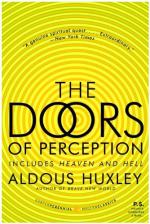
|
| Name: _________________________ | Period: ___________________ |
This quiz consists of 5 multiple choice and 5 short answer questions through Book 2: Appendix 1.
Multiple Choice Questions
1. According to the author, which form of art is most practically useful?
(a) Sculpture.
(b) Literature.
(c) Architecture.
(d) Ceramics.
2. According to the author, why do religious devotees participate in practices to atone for their sins?
(a) To prepare themselves for judgment after death.
(b) To get a reprieve from feelings of guilt or inadequacy.
(c) To achieve a natural high, created by feelings of religious exultation.
(d) To achieve a better understanding of themselves and the teachings of their religion.
3. What is the second technique, described by the author in Appendix 1, for inducing a visionary state?
(a) Use of ambient music.
(b) Use of a repetitive hand movement.
(c) Use of various sound frequencies.
(d) Use of a stroboscopic lamp.
4. Why is it important that people can sometimes be hypnotized by gemstones?
(a) It offers another way for people to achieve the same results that they would get with drugs.
(b) It gets psychiatrists another step closer to understanding how hypnotism works.
(c) It demonstrates the suggestibility of humans.
(d) It shows the power that art has over the human mind.
5. From whence does the author believe visionary experiences originate?
(a) From the user's memories.
(b) From the user's racial memory.
(c) From the user's imagination.
(d) From the Mind-at-large.
Short Answer Questions
1. How does mescalin affect the user's brain function?
2. To what field of science does the author compare the human mind at the beginning of "Heaven and Hell"?
3. What does the author wonder about the neurological patterns produced during visionary experiences at the end of Appendix 1?
4. What is the main reason for conducting the experiment in which the author participates?
5. What is the biggest difference between dreams and visions, according to the author?
|
This section contains 452 words (approx. 2 pages at 300 words per page) |

|




